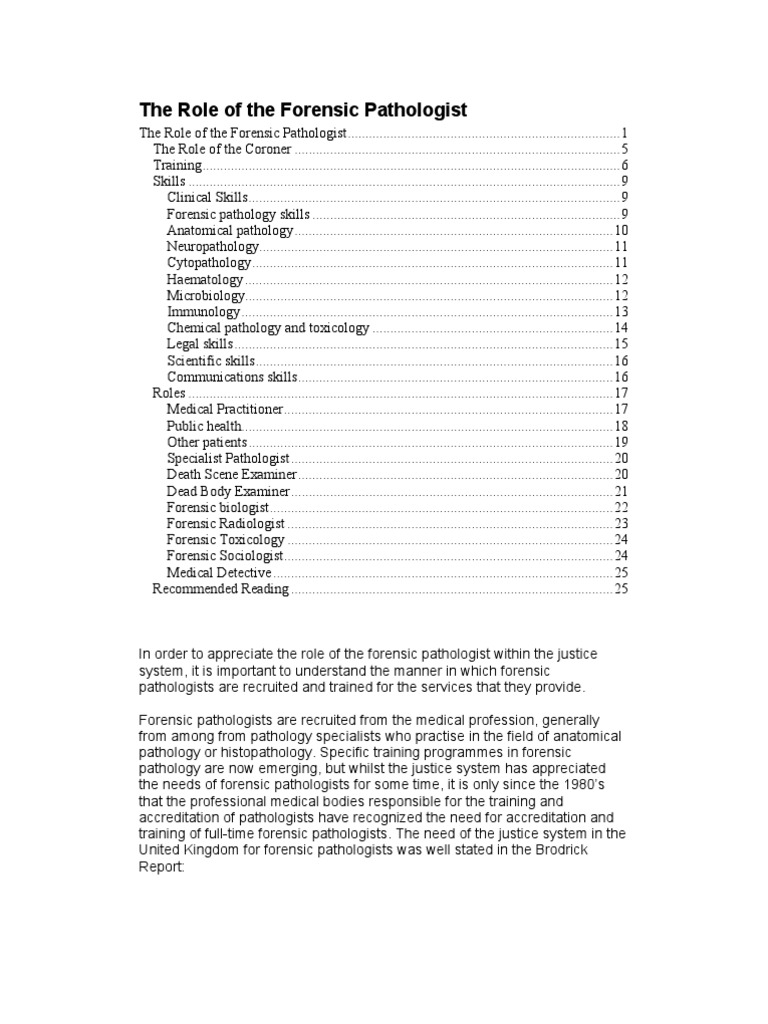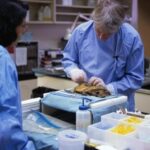Ever wondered if the forensic pathologist, that paragon of postmortem pronouncements, routinely graces the gritty tableau of the crime scene? It’s a valid query, a consideration that plunges us into the intricate dance between pathology and criminal investigation. It seems logical, almost axiomatic, that the individual tasked with deciphering the final chapter of a life should be intimately familiar with the setting where that chapter concluded. But logic, as anyone involved in the legal system can attest, doesn’t always dictate reality.
Consider this hypothetical: a bucolic meadow becomes the epicenter of a homicide investigation. Do we immediately summon the forensic pathologist to contemplate the trampled flora and fauna? Or perhaps a dilapidated warehouse, redolent with the ghosts of forgotten industry, cradles a body amidst its decaying infrastructure. Is the pathologist required to navigate the labyrinthine corridors of decay? The answer, predictably, is nuanced.
The role of the forensic pathologist, while inextricably linked to the crime, is primarily focused on the *internal* landscape of the deceased. Their expertise lies in the *postmortem examination*, a meticulous exploration of the body designed to unveil the cause and manner of death. This often entails microscopic analysis, toxicological assessments, and a host of other specialized procedures best performed within the controlled environment of a laboratory or morgue.
So, when *does* the forensic pathologist venture beyond the sterile confines of their domain and into the realm of the active crime scene? The answer lies in a complex interplay of factors, including the complexity of the case, the resources available, and, crucially, the established protocols of the jurisdiction.
Let’s delve deeper into the typical, and atypical, scenarios:
I. The Standard Operating Procedure:
In most jurisdictions, the initial crime scene investigation is the purview of law enforcement personnel, crime scene technicians, and other specialists. These individuals are tasked with securing the scene, documenting its features photographically and diagrammatically, and collecting evidence. The forensic pathologist is typically *not* present at this initial stage. They rely on the observations and documentation of these other professionals to inform their subsequent examination.
II. Instances Warranting Pathologist Presence:
Despite the typical protocol, several scenarios may necessitate the presence of a forensic pathologist at the crime scene. These situations often involve cases where the circumstances surrounding the death are ambiguous, unusually complex, or raise specific questions that require the pathologist’s unique perspective.
A. Mass Fatality Incidents: In instances of mass casualties, such as plane crashes or natural disasters, the forensic pathologist’s expertise in identifying and examining remains becomes invaluable at the scene itself. They can assist in triage, provide guidance on body recovery, and contribute to the initial assessment of the scale and nature of the disaster.
B. Unusual or Suspicious Circumstances: If the manner of death is overtly suspicious or the initial investigation reveals anomalies that require expert interpretation, the pathologist might be called to the scene. For instance, if the body is found in an unusual position, or if there are indications of ante mortem trauma that are not readily explicable, the pathologist’s insights can be crucial.
C. Homicides with Complex Trauma Patterns: In cases involving gunshot wounds, stabbing, or blunt force trauma, the pattern of injuries and their relationship to the surrounding environment can be critical in reconstructing the events that led to death. The pathologist’s presence at the scene can aid in documenting these patterns and formulating hypotheses about the mechanism of injury.
D. Exhumations: When a body is exhumed for further investigation, the forensic pathologist is almost always present to oversee the procedure and document the state of the remains in situ. This is crucial for ensuring the integrity of the evidence and avoiding contamination.
E. Cases Involving Decomposition or Skeletal Remains: The interpretation of decompositional changes and skeletal trauma requires specialized knowledge. A forensic anthropologist, often working in conjunction with the forensic pathologist, might be called to the scene to assist in recovering and analyzing skeletal remains.
III. The Practical Challenges:
Even when a pathologist’s presence at the crime scene is deemed desirable, practical limitations can often preclude their involvement. These challenges include:
A. Resource Constraints: Forensic pathologists are a finite resource. The demands on their time and expertise are often substantial, and it may not be feasible to dispatch them to every crime scene, especially in high-volume jurisdictions.
B. Scene Contamination: The presence of additional personnel at a crime scene invariably increases the risk of contamination. Pathologists, like other investigators, must take meticulous precautions to avoid introducing foreign materials or disturbing the evidence.
C. Jurisdictional Boundaries: Forensic pathologists typically operate within specific geographic areas. Their availability to attend crime scenes in other jurisdictions may be limited.
IV. The Importance of Collaboration:
Ultimately, the effectiveness of a forensic investigation hinges on seamless collaboration between law enforcement, crime scene technicians, and forensic pathologists. Clear communication, comprehensive documentation, and a shared understanding of the goals and objectives of the investigation are essential for achieving a just and accurate outcome.
In conclusion, while the image of the forensic pathologist as a constant presence at the crime scene might be a staple of popular media, the reality is far more complex. Their attendance is not a routine occurrence, but rather a carefully considered decision based on the specific circumstances of each case. Their primary domain remains the autopsy suite, but their expertise can be invaluable at the crime scene when the situation demands it. The crucial element is a cohesive, coordinated effort between all parties involved to ensure the pursuit of truth and justice.










Leave a Comment